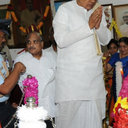Clinical Diversity of CNS Cryptococcosis.
Mots clés
Abstrait
Though cryptococcal meningitis (CM) is recognized as a disease of the immunocompromised, studies have implicated that it also affect immunocompetent patients.
This was a cross sectional study conducted in the Department of Medicine of a tertiary teaching institution in North India. All the patients diagnosed with CM on the basis of detection of cryptococcal antigen or the presence of capsulated budding yeast cells on India ink preparation, from April 2009 to March2015 were included in the study. Demographical profile, clinical presentation, predisposing factors, CSFcharacteristics, imaging abnormalities and in patient outcome were noted and analyzed.
Among the 40 patients diagnosed with CM, 62.5% of them were males. Patients who were immunocompetent constituted 20%, those with predisposing factors other than HIV were 25% and55% had HIV infection (initial presentation in 59%). Mean age of presentation was 44.75 ± 15.58 years. Mean duration of symptoms in all three groups varied from few days to 4-5 weeks. Clinical presentations included fever (16), headache (14), altered sensorium (16), seizures (5), paraparesis (4), hemiparesis (2), lateral rectus palsy (3), VII nerve palsy (2), bilateral vision loss with ptosis (1) and ataxia (1). Neck stiffness was present in 50% patients of immunocompetent group, 45.45% of HIV patients and none in the 3rd group. Acellular CSF (37.5%) was not unusual. Mean CSF white cell count in HIV patients, in other immunocompromised patients and immunocompetent patients were 100± 158.53, 36.88 ± 92.43 and 32.5 ± 62.05 /mm3 respectively which was predominantly lymphocytic. Mean CSF protein were 136.73 ± 139.82, 62.67 ± 51.11 and 152.29 ± 218.24 g/dl in these groups. Abnormalities detected on imaging included, meningeal enhancement, encephalomalacia, infarct, cerebellitis, hydrocephalus, cord hyper intensities and cervical spine intramedullary lesion. Mortality rate in CM patients was 20%. On mortality analysis, death was mostly attributed to the primary disease.
Clinical presentation of CM in both immunocompetent and immunocompromised patients was similar. Though previous studies noted less inflammation in immunocompromised patients, in this series it was noted that both immunocompromised and immunocompetent patients mounted similar inflammatory response. Since the presentation of CM is variable, all cases of meningitis should be screened for the same.


